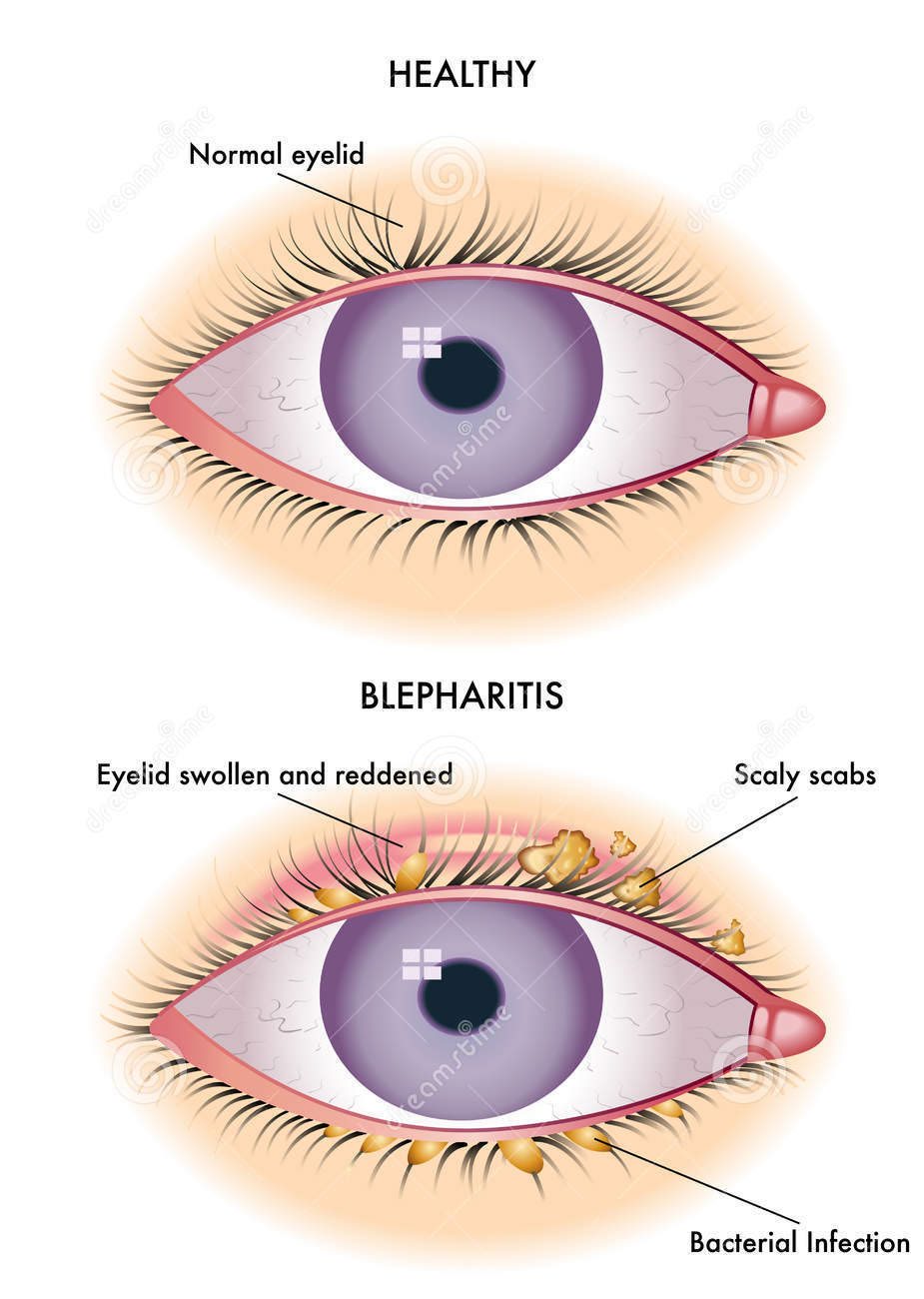What is blepharitis?
Blepharitis is a chronic inflammatory disease of the eye that affects the edge of the eyelid for a long time. Blepharitis is also one of the common diseases seen in ophthalmology clinics.
Causes of blepharitis
- Excessive secretion of eyelid oil glands
- Dirty eyelids
- Bacterial infection
Symptoms of blepharitis
- Red, swollen and itchy eyelids
- Dry eyes, fatigue and discomfort
- Excessive eye secretions, accumulation on the edge of the eyelids and eyelashes
If blepharitis is ignored for a long time or not properly treated, it may lead to serious sequelae, including:
- Inflammation of the cornea
- Ingrown eyelashes
- Scarring of the eyelids
Although the patient's eyes do not show obvious signs of inflammation, if not properly treated, the patient will suffer from long-term mental and physical distress.
Diagnosis
Ophthalmologists can see the following symptoms of blepharitis through a microscope:
- Redness and swelling of the eyelid edge (Telangiectasis)
- Sebum
- Crust Formation
Treatment
The general principles of treatment are:
- Prevent vision loss due to corneal inflammation
- Reduce the patient's distress caused by eye discomfort
Warm compress on the eyes
- Warm compress can increase blood circulation, help recovery and relieve eye discomfort, and also help soften and discharge oil
- Wet a dry towel with warm water (do not use too hot water to avoid burns) and apply it to the eyes (if the towel becomes cold, dip it in warm water again)
- Apply warm compress two to three times a day, each time for about five to ten minutes.
Clean your eyelids and eyelashes thoroughly every day
A. You can use individually packaged eyelid cleaning products, or a mild cleaning solution (such as 10 drops of baby shampoo (non-astringent formula)) and warm water (100cc of boiled cold water (1:10)
B. Clean your hands first and wipe them dry
C. Use a cotton swab or cotton ball dipped in diluted baby shampoo to clean the upper and lower eyelids, paying special attention to the roots of the eyelashes
D. Rinse with clean water
E. Generally speaking, it is sufficient to clean twice a day; if the blepharitis is more serious, it must be cleaned three to four times to achieve the effect of eliminating eye discomfort. The initial effect may not be obvious, and you need to clean your eyelids regularly and persistently to see the effect.
F. If there are symptoms of dry eyes at the same time, the patient can use artificial tears as a supplement. Severe blepharitis may be examined by an ophthalmologist, and if necessary, an eye ointment containing antibiotics or short-term use of hormones may be used. Suffering from mental and physical distress
G. Even take medication to control the condition.
